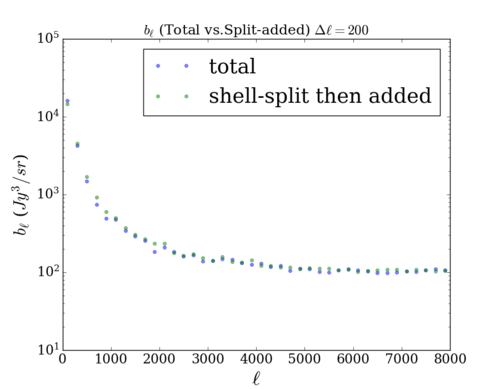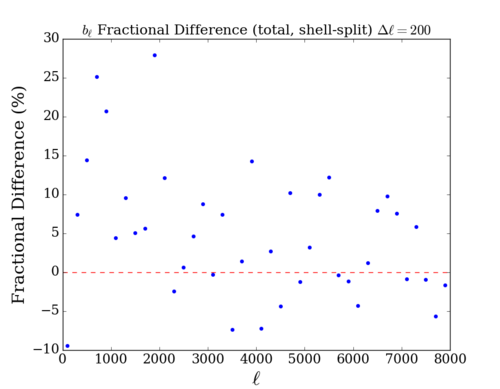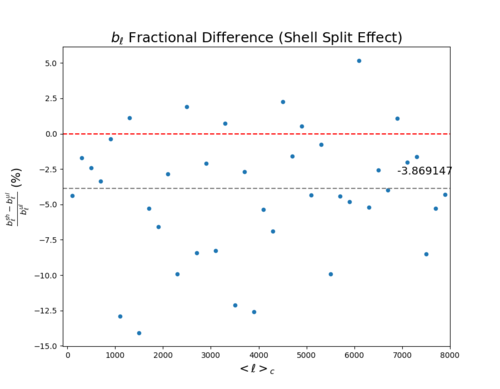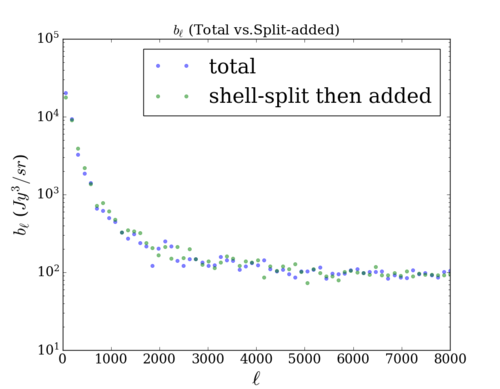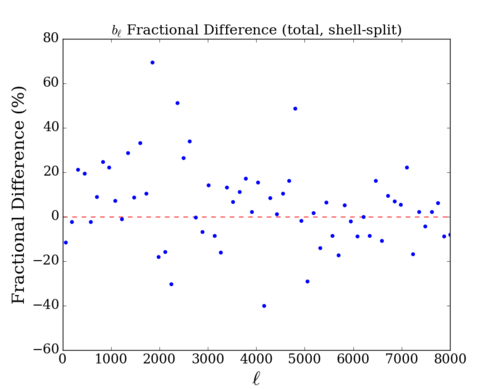Nov 3rd, 2019 - Sanity Check on Shell-Split-Then-Added Map
Jump to navigation
Jump to search
I have managed to run the 'halo2fluxmap' code to generate shell-split CIB for 545GHz. Below are plots showing sanity checks on the reduced bispectrum, comparing the reduced bispectrum of the CIB map generated with one shell from z = 0 to 4.5 and the addition of 19 equal comoving distance CIB shells. The flux cut of 400mJy was taken after adding the maps up in the latter case.
[math]\displaystyle{ \Delta \ell = 200 }[/math] (Bin-width Equivalent to SPT's)
The first plot shows a direct comparison between the total (one shell) and shell-split then added CIB bispectra.
The two plots below are the fractional differences; the first is of the new map, while the second is of the old map. The magnitude of the scattering for the new map is roughly twice that of the old map (judging from the y-axis scales). While this may seem odd, no flux cuts were undertaken for the old map, so it is natural that the fractional difference calculated from the new map (with the flux cut) should be more sensitive to shell-edges. One thing that is a bit odd is that the shell-split then added map has a higher bispectrum than the total map for the new map, while it is lower for the old map. However, I do not think we need to worry about this for the lensing analysis, since the different flux cuts may have something to do with this.
[math]\displaystyle{ \Delta \ell = 128 }[/math] (Bin-width Equivalent to Planck's)
The plots below are the [math]\displaystyle{ b_{\ell} }[/math] comparison and the fractional difference for a finer bin-width. Compared to the case of bin-width = 200 above, we see that the scatter is quite high, which is expected since larger bins would 'smooth' or average out the curve to some degree. The magnitude of the scatter is higher than I would have assumed.
I am intending to use the [math]\displaystyle{ \Delta \ell = 200 }[/math] filters for the lensing analysis as I have been doing previously.
